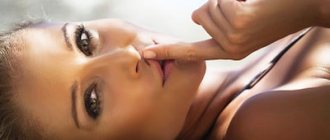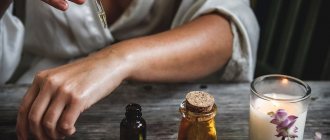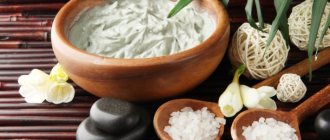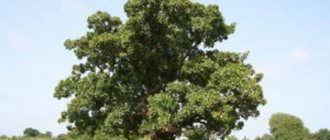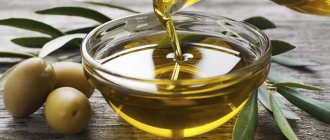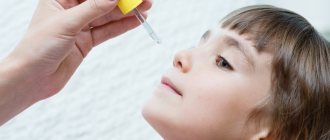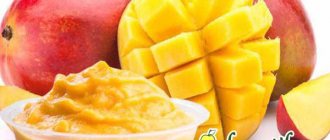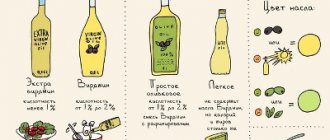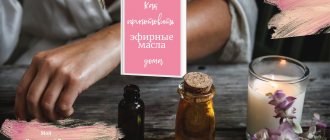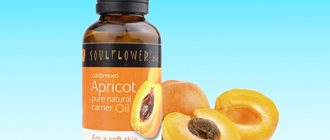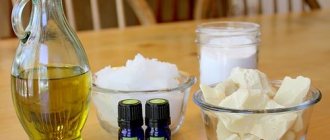In the middle of summer, tall, powerful trees bloom, inviting bees with their fragrance to collect honey. Linden has been used for the face, or rather its inflorescences, since time immemorial. Each housewife kept a bag with a magical cosmetic product. And, today you can moisturize and tone, refresh and rejuvenate the skin with the help of fake recipes.
Benefits of linden for skin
Medicinal properties allow:
- Whiten and refresh your face;
- Relieve swelling and signs of fatigue;
- Cleanse and tighten pores;
- Restore elasticity;
- Effective against wrinkles and loss of turgor.
Flowers are useful due to their content:
- talicin;
- essential oils;
- ascorbic acid;
- carotene;
- saponins;
- tannins;
- flavin glycosides.
Contraindications – individual intolerance. To avoid harm, be sure to test the composition first.
Use of linden flowers for the face
In cosmetology, linden flowers can be used for all skin types. To strengthen facial vessels, as well as elasticity, it is worth using cryoprocedures with a decoction of flowers.
For deep cleansing and care of problematic/oily epidermis, you should use the liquid for daily washing. Alcohol infusion can be used to enrich tonics and lotions and add to antiseptic ointments. A natural cream will help cope with sagging and age-related folds.
Linden decoction
Result: linden decoction perfectly moisturizes and refreshes, has antioxidant properties.
Ingredients:
- Art. lime blossom spoon;
- 350 ml water.
Preparation and method of application: combine the ingredients, place on the stove, after boiling, wait another 10 minutes. After straining and cooling, pour into a cosmetic bottle.
Application: for cleansing instead of micellar water, add to masks and lotions, as a steaming compress.
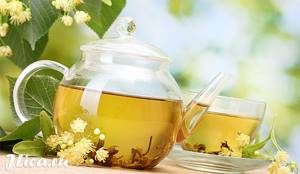
Linden infusion
Result: narrows pores, tones, activates intracellular processes.
Ingredients:
- 5 gr. linden;
- 100 ml alcohol/vodka.
Preparation and method of application: place dry inflorescences in a dark vessel, pour in high-degree liquid, leave for about eight days. Do not apply in its pure form, use up to twelve drops per ten ml of base.
Application: enrich acne treatment creams and gels, add to homemade lotion and tonic.
Linden ice
Result: restores the oval line, softens, stimulates collagen synthesis.
Ingredients:
- 60 ml of linden flower decoction;
- 7 ml mango oil.
Preparation and method of application: combine the finished broth with oil, pour into molds and freeze. Make smoothing movements with linden ice cubes after evening cleansing of the skin. Lightly blot excess liquid with a napkin and apply nourishing serum.
Application: use ice with linden in seven-day courses, up to four times a year.
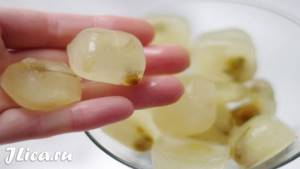
Linden cream
Result: effectively copes with sagging, refreshes, improves structure and color.
Ingredients:
- 8 drops of linden infusion;
- 5 ml jojoba oil;
- 10 gr. sour cream.
Preparation and method of application: Whisk the fatty ingredients together with the linden concentrate. Place in a cosmetic jar and store in the refrigerator for no more than six days. Apply after cleansing, fifteen minutes before makeup.
Application: it is recommended to use natural cream for facial massage, as well as in a daily care complex.
author's book "Plants of the Urals in cosmetology" article on the topic
L.D.Shirokaya
PLANT OF THE URAL
IN COSMETOLOGY
Yuzhnouralsk
2014
INTRODUCTION
It has long been proven that beauty is genetics plus the ability to take care of oneself and, of course, it is health, because if there is no health, beauty is unlikely to remain. Much depends on what place it occupies in our lives. We purchase cosmetics because we do not want to grow old, but want to look young and beautiful. Some buy them in unlimited quantities, others buy only the most expensive ones, of real European quality... Representatives’ advertising tells us that “every woman, regardless of her skin type and age, can have beautiful, fresh, radiating health skin.”
But is it only cosmetics from the store that fulfill our desires? There are other ways to keep your skin healthy, young and beautiful. Herbal medicine is the most natural path to beauty and health, known since ancient times. Currently, a new scientific branch has been created - phytocosmetology, which combines cosmetology, herbal medicine and medicine. It is she who helps solve many problems, taking into account the medicinal properties of a particular plant.
Our Urals are a storehouse of healing raw materials. Trees, herbs, berries from forests, gardens and vegetable gardens bring us invaluable benefits. We need to be able to use what grows next to us in order to achieve the desired result without extra costs.
Age-related skin changes
At different ages, facial skin requires certain care and the use of different cosmetics. But at any age, the skin must be cleansed, nourished and moisturized, and protected from environmental influences. When using medicinal plants, it is imperative to take into account age-related changes in the skin and perform procedures correctly to achieve maximum effect.
UP TO 25 YEARS OLD. The skin should be cleansed and moisturized. While the skin is firm and elastic. Sometimes acne appears, so you should try to find out the cause and follow the recommendations of a dermatologist or other doctors. You should lead a healthy lifestyle, give up bad habits, eat right and get enough sleep.
25 – 30 YEARS OLD. The skin is still elastic and smooth. But during this period, age-related changes begin to appear: the first facial and fine wrinkles, sometimes horizontal lines near the eyebrows, from the nose to the corners of the mouth. The skin needs vitamins and nutrients. It is useful to drink infusions of medicinal herbs (rose hips, rowan and chokeberry), mineral water.
30 – 40 YEARS OLD. Superficial wrinkles are more noticeable. Pigment spots may appear, and dark circles may appear under the eyes. Cosmetics containing hyaluronic acid should be used.
40 – 50 YEARS OLD. There is an active formation of wrinkles. They appear on the forehead, around the eyes. Nasolabial folds are noticeable. The cheeks droop slightly and the skin on the neck sags. Sometimes a double chin is noticeable. The skin is tougher, but in some places noticeably thinner, blood vessels are visible. You should maintain skin elasticity and restore its tone with massage. Facial masks that stimulate the functioning of epidermal cells are useful.
50 – 60 YEARS OLD. The skin of the face changes significantly. Bags form under the eyes. The skin around the jaw and chin becomes loose. In addition to wrinkles, folds also form. It is important to use cosmetics that are specifically recommended for the hormonal changes that occur in the female body at this age.
OVER 60 YEARS OLD. There is a further change in the contours of the face. The skull becomes smaller, the bones become thinner, and there are criss-cross wrinkles on the cheeks. The corners of the mouth droop, the face takes on a “sullen” expression. Special cosmetics are needed to prevent the aging process of the skin. It is necessary to strictly monitor your health, treat chronic diseases such as diseases of the stomach, liver, and intestines, which contribute to skin aging.
FACIAL SKIN CARE
Face and neck masks
Masks are the simplest and most affordable skin care product. They can be very different: from vegetables and fruits, from decoctions and infusions of medicinal herbs. But they all have one purpose - to activate blood circulation and improve skin nutrition. Some masks not only nourish, but also have a soothing, cleansing or whitening effect. When preparing a mask, it is necessary to take into account that the substances included in its composition must be clean and fresh, and fruits and vegetables must be ripe. The mask should be prepared immediately before applying it. Apply masks strictly along the skin lines of the face, on the neck - from bottom to top. The skin must be cleansed. The mask exposure time is 15-30 minutes. Afterwards it is washed off with warm and then cold water.
Masks for dry skin
- 2 tbsp. spoons of finely ground St. John's wort, chamomile, coltsfoot, linden blossom pour boiling water until a paste is obtained. Cool to 30-40 degrees and apply to face.
- From lettuce leaves. Grind the leaves and squeeze out the juice. By two st. add black or red currant juice to spoons of juice.
- Apple. Grate one apple, mix with 1 tbsp. spoon of vegetable oil and apply to face.
- From pumpkin. 2 tbsp. Mix spoons of boiled pumpkin with 1 tbsp. spoon of vegetable oil and apply to face.
- Apple.1 tbsp. Mix a spoonful of finely grated apple with 1 tbsp. a spoonful of butter and 1 teaspoon of honey.
- Carrot. Mix grated carrots (1 piece) with 1 tbsp. spoon of sour cream and 1 tbsp. spoon of cucumber juice.
- Mix 1 tbsp. spoon of crushed mint and dandelion leaves, add 1 tbsp. a spoonful of sour cream and 1 teaspoon of honey.
- Mix 1 tbsp. a spoonful of finely chopped dill with 1 teaspoon of vegetable oil.
- Mix 2 teaspoons of chopped linden blossom and sage, pour in 1 glass of milk and bring to a boil. Apply layers of gauze moistened with this composition to the face.
Masks for oily skin
- Wash the sorrel leaves and chop finely. 1 tbsp. Mix a spoonful of greens with whipped egg whites.
- Mix 3 tbsp. spoons of carrot juice and 2 tbsp. spoons of sauerkraut juice. Moisten a gauze pad and apply to the face, after 3 minutes, wash with warm water.
- Apply a thick layer of lightly squeezed sauerkraut to your face, and after 15-20 minutes rinse with sage infusion.
- Grind fresh onions, mix with whipped egg whites in equal quantities and apply to face.
- Mix parsley juice with milk (1:1), moisten a gauze pad and apply to the face.
- Mix crushed dandelion leaves in equal parts with egg white and low-fat cottage cheese, apply to the face.
7.Masks with herbal decoction:
- St. John's wort, yarrow, calendula;
- flowers of chamomile, St. John's wort, sage, dill and linden blossom;
- linden blossom, chamomile flowers, rose petals, parsley, mint, dill and hop cones.
(1 tablespoon of the composition per glass of boiling water, boil for 5 minutes, strain. Apply gauze to the face in 2-3 layers, moistened with the broth).
- Place tomato slices on your face.
Masks for aging facial skin
- Grind the pulp of hawthorn fruits, add egg yolk and sour cream.
- Apply zucchini pulp to face and neck.
- Grind fresh plantain leaves to a paste, mix with 1 teaspoon of honey and 1 teaspoon of boiled water.
- Mix 1 teaspoon each of mint leaves, dill, linden blossom, rose or rose petals, pour boiling water over the mixture.
- Mix 1 tbsp. spoon of carrot juice, 1 tbsp. a spoonful of lemon juice and 1 tbsp. a spoonful of curdled milk.
- Grate 1 small carrot and 1 green apple on a fine grater, mix and apply to the face.
- 2 tbsp. mince tablespoons of parsley leaves and stems and apply to the face, excluding the lower eyelid area.
- Cut into small pieces and boil the pumpkin pulp, grind into a paste and add the yolk and 1 teaspoon of honey.
HAIR CARE
Rub-in product for oily hair:
Finely chop oak bark and onion peel (1:1), simmer over low heat (a glass of mixture per 1 liter of water) for 1 hour. Cool, strain. Moisten your hair with the mixture, put on an insulating cap, and take it off after an hour.
Rinse for oily hair:
3 tbsp. Boil spoons of oak bark for 15 minutes over low heat in 1 liter of water, cool and strain. Rinse your hair 2-3 times a week.
Rub-in product for dry hair:
Leave 100 g of fresh burdock roots in 1 glass of butter for a day, then boil for 15 minutes over low heat, cool and strain. Once a week, apply the composition to the skin and hair, comb with a sparse comb and put on an insulating cap. After 2 hours, remove.
Rinse for dry hair:
1 tbsp. pour a spoonful of dry nettle into 250 g of boiling water, leave in a thermos for 2 hours, cool and strain. Rinse your hair, massaging your scalp.
Infusions of chamomile, burdock, birch, linden blossom, and mint are used similarly.
Cleanser for fine, depleted hair:
Prepare an infusion of nettle, plantain and chamomile (1:1:1): 1 tbsp. pour a spoonful of the mixture into 250 g of boiling water and leave in a thermos for 2 hours, cool and strain. Apply the composition to your hair while wearing an insulating cap. Rinse off with warm water.
Infusion for dry, exhausted hair:
Pour 1 part red capsicum into 10 parts alcohol, strain after a week. Dilute 1 part of the tincture in 10 parts of boiled water. Rub into scalp 2-3 times a week.
Means for rubbing hair with a tendency to baldness:
Pour 1 teaspoon of crushed calendula flowers into 200 g of boiling water. Leave in a thermos for 30 minutes, cool and strain. Rub into the scalp daily (for a long time).
Rinse for dry hair and dandruff:
Boil 100 g of nettle leaves over low heat in 0.5 liters of water for 30 minutes, cool and strain. Rinse your hair and scalp daily while massaging.
3 tbsp. Mix tablespoons of crushed leaves of coltsfoot and nettle, pour in 1 liter of boiling water, leave in a thermos for 2 hours, cool and strain. You can rinse your hair and scalp daily.
To prevent your hair from splitting:
1 tbsp. Place a spoonful of fresh plantain leaves in a glass of boiling water. Leave and rinse hair after washing.
To improve hair growth:
Once a week, 2 hours before washing your hair, rub garlic paste into the scalp. If your hair is dry, you can mix the gruel with vegetable oil (1:1).
To strengthen hair:
Pour 2 finely chopped onions with 300 ml of vodka and leave for 2 hours. Lubricate your head with the strained tincture once a day.
To rinse oily hair:
1 tbsp. a spoonful of rowan fruits in 2 cups of boiling water. Boil for 10 minutes over low heat. Use after washing your hair.
Rinse for oily hair and dandruff:
1 tbsp. pour a spoonful of crushed hop cones into 1 tbsp. boiling water, leave for 1 hour, strain. Moisten washed hair with the infusion, lightly squeeze without drying, and allow it to air dry. Do the procedure 2-3 times a week, at least 10 times. Repeat after 2 months.
For stronger hair, shine and a healthy look:
Grind 3 sprigs of mint, 5 raspberry leaves, 5 currant leaves to a paste. Add 0.5 cups of cream and 2 tbsp. spoons of starch, mix everything and apply to hair along the entire length. Put on a plastic scarf and insulate it. After 30-40 minutes, rinse with warm water and wash your hair with shampoo.
MEDICINAL PLANTS OF THE URAL IN PHYTOCOSMETOLOGY (INUSIONS, BOTTOS AND JUICES)
| Plant | Composition of infusion, decoction | Cooking method and time | Method of use | Indications for use |
| 1 | 2 | 3 | 4 | 5 |
| Silver birch | 1 tbsp. spoon of kidneys per 1 tbsp. water 2 tbsp. l. leaves for 1 tbsp. boiling water Birch juice | Boil for 15-20 minutes. Infusion for 20-30 minutes. — | Wiping the face Hair rinsing Wiping the skin of the face | Inflammatory processes, skin irritation, acne Dandruff, increased hair loss Aging skin, wrinkles, acne and age spots |
| Hawthorn blood red | 1 tbsp. spoon of fruit per 1 tbsp. boiling water | Infusion for 15-20 minutes. | Wiping the skin of the face | Dry skin |
| Oregano | 2 tbsp. spoons of herbs per 1 tbsp. boiling water | Infusion 1 hour | Rubbing your face 2-3 times a day | Oily, porous skin, acne |
| St. John's wort | 2 tbsp. spoons of herbs per 1 tbsp. boiling water | Infusion 30 minutes. | Daily face wipe | Oily, porous and inflamed skin, acne |
| Calendula officinalis | 1 tbsp. l. flowers for 1 stack. boiling water | Infusion 30 minutes. | Rubbing your face 2-3 times a day | Oily, porous skin, acne |
| Viburnum common | Fruit juice 1 tbsp. l. leaves for 1 tbsp. boiling water | Infusion 30 minutes. | Rubbing the face and neck 2 times a day Same | Acne, metabolic disorders in the skin Dry, irritated skin |
| White cabbage | Fresh juice Sauerkraut juice | Apply to cleansed face Same | Loose, wrinkled skin Oily skin | |
| Potato | Fresh tuber juice | Rubbing your face 2-3 times a day | Inflamed skin, acne | |
| Stinging nettle | Leaf juice 1 tbsp. l. dry leaves per 1 tbsp. boiling water | Infusion 1 hour | Rubbing into the scalp or washing your hair with juice Lightly rub into clean scalp | Dandruff, increased hair loss Dandruff, poor growth and hair loss |
| Small-leaved linden | 1 tbsp. l. flowers for 1 stack. boiling water | Brewing like tea | Face wash | Presence of freckles |
| Burdock | 1 tbsp. roots for 1 tbsp. water 2 tbsp. roots for 1 tbsp. water | Boil for 20 minutes. Boil for 10-15 minutes. | Face wash Rub into scalp after washing | Oily skin, acne Poor growth and hair loss |
| Bulb onions | Fresh Juice Same 20 g onion peels per 2 tbsp. boiling water | Infusion for 15-20 minutes. | Wiping your face 2 times a day Rub into scalp 1-2 hours before washing 2-3 times a week Rinsing hair after shampooing | Presence of freckles Dandruff, poor growth and hair loss Same |
| Common raspberry | 1 tsp. leaves for 1 tbsp. boiling water | Infusion 30 minutes. | Rubbing your face 2-3 times a day | Dry, irritated skin |
| Coltsfoot | 1 tsp. leaves for 1 tbsp. boiling water 1 tbsp. l. leaves for 1 tbsp. boiling water | Infuse for 15 minutes. | Rubbing your face 2-3 times a day | Dry, irritated skin |
| Cucumber | Fresh juice of young cucumber | Rubbing your face 2-3 times a day | Presence of freckles | |
| Dandelion officinalis | Milky sap of plant stems 1 tbsp. l. flowers for 1 stack. boiling water | Infusion 1 hour | Lubricating certain areas of the face 2-3 times a day Same | Freckles, acne Same |
| Common parsley | Fresh green juice Dry herbs poured with boiling water 1:10 | Infusion 1 hour | Lubricating certain areas of the face 2-3 times a day Apply a napkin with infusion to the face for 15-20 minutes. | Freckles, age spots Same |
| Tansy | 1 tbsp. l. flowers for 2 stacks. boiling water | Infusion 2 hours | Rinsing hair after shampooing | Dandruff, poor hair growth |
| Large plantain | 1 tbsp. l. leaves for 1 tbsp. boiling water | Infusion 30 minutes. | Warm hand baths for 10-15 minutes. | Dry hand skin |
| Wormwood | 1 tbsp. spoons of herbs per 1 tbsp. boiling water | Infusion 2 hours | Rubbing your face 2-3 times a day | Oily, porous skin, acne |
| pharmaceutical camomile | 4 tbsp. l. flowers for 1 stack. boiling water | Infusing for 20 minutes. | Rubbing your face 2-3 times a day | Presence of acne |
| Mountain ash | 1 tbsp. l. fruit juice and lemon juice per 20 ml of vodka | Rubbing your face 2-3 times a day | Freckles, age spots | |
| Scots pine | 1 tbsp. l. kidneys per 1 tbsp. boiling water | Infusion 2 hours | Rubbing your face 2-3 times a day | Acne |
| Yarrow | 1 tbsp. spoon of herb per 1 tbsp. boiling water 3 tbsp. l. herbs in 0.5 liters of boiling water | Infusion 30 minutes. Infusion 1 hour | Rubbing your face 2-3 times a day Rub into scalp after washing | Flabbiness of facial skin, wrinkles Hair oiliness |
| Dill fragrant | 1 tbsp. spoon of fruit per 1 tbsp. boiling water | Infusion 30 minutes. | Applying a napkin with infusion to a cleansed face | Acne |
| Horsetail | 2 tbsp. spoons of herbs per 1 tbsp. boiling water 1 tbsp. spoon of herb per 1 tbsp. boiling water | Infusion 1 hour Infusion 30 minutes. | Rinsing hair after shampooing Wiping your face 1-2 times a day | Dandruff, poor hair growth and hair loss, excess oiliness Oily, porous skin |
| Horseradish | 20 g of roots per 100 ml of table vinegar | Infuse for 2 weeks in a dark, cool place, dilute with water 1:1 | Rubbing the face 2 times a day with the resulting lotion | Freckles, age spots |
| Tripartite sequence | 3 tbsp. l. herbs for 2 tbsp. water | Boil for 10 minutes. | Wiping your face 1-2 times a day | Oily skin, acne |
| Garlic | Juice of garlic bulbs with pork fat Garlic juice | Lubricating warts to remove them (daily) Rub into scalp 2 hours before washing | Presence of warts Increased hair loss | |
| Great celandine | 2 tbsp. spoons of herbs per 1 tbsp. boiling water Plant juice (more effective than infusion) Plant juice | Infusion for 15-20 minutes. | Wiping the face Lubricating the facial skin 2-3 times a day Rub into scalp after washing | Freckles, age spots Freckles, age spots Hair loss |
Red berries for facial beauty
Summer is the time of red berries, which give women beauty. All of them are rich in antioxidants, strengthen the immune system, remove toxins and waste from the body, stimulate metabolism, and help “burn” fats. This means the berries are beneficial for both appearance and health.
STRAWBERRY. Strawberry masks dry out and heal acne, tighten pores, remove age spots from the skin, give it elasticity, eliminate excess oil and improve complexion.
The berry pulp is applied to the face for 15–20 minutes, then washed with cool water.
CHERRY. Refreshes complexion, tightens pores, improves skin surface structure. Cherry masks reduce oily scalp and hair and prevent seborrhea.
Mix cherry juice with milk in equal proportions, moisten a napkin and place on your face for 10 minutes. Wash with cool water. And for hair, cherry juice and lemon juice with the addition of potato starch are used. The mixture is applied to the head for 1 hour, covering the head with polyethylene, then washed.
RED CURRANT. Reduces skin oiliness, tightens pores, whitens the face, and returns it to a healthy color.
Squeeze the juice from a handful of berries, add 1 tbsp. spoon of potato starch and apply to face for 15 minutes, then wash with cool water.
RASPBERRIES. The vitamins contained in raspberries prolong the youthfulness of the skin. Masks whiten and moisturize the skin, prevent acne.
Wipe your face daily with raspberry juice or frozen juice cubes. A decoction of raspberry leaves is used to rinse hair after washing.
STRAWBERRY. Berries whiten, cleanse and vitaminize the skin, giving it velvety and freshness. Masks help cope with acne.
Add half a teaspoon to the strawberry pulp. Spoons of glycerin and apply to facial skin for 10-15 minutes. Berries can be mixed with yolk (for aging or dry skin) or egg white (for oily skin).
So, in the summer you need to seize the moment and eat more red berries and, of course, leave them for external use (not forgetting about the allergic reaction).
Flower cosmetics
Summer is not only the time of berries, but also an abundance of flowers that please the eye and lift your spirits. They also work for our beauty: they rejuvenate the skin, give it tone, eliminate flaking and help get rid of acne.
GLADIOLUS. The mask is recommended for aging facial skin; it smoothes out fine wrinkles and gives the skin tone.
Pass the gladiolus leaf through a meat grinder, add 0.5 tbsp. spoons of sour cream and 0.5 teaspoons of honey, mix everything and apply to the face for 10 minutes. Then wash with warm water (for oily skin, use whipped egg white instead of sour cream).
DAHLIA. The mask relieves inflammation and helps get rid of acne.
Pick 2 - 3 dahlia leaves, soak them in cold water for 10 - 15 minutes, tear into large pieces and place on inflamed areas of the face or pimples for 15 - 20 minutes. Rinse your face with cool water.
ROSE. The mask smoothes wrinkles and rejuvenates aging skin.
Pass 5 slightly wilted rosebuds through a meat grinder. Melt 50 g of plums. oil, add 3-5 drops of lemon juice, mix everything and store in a sterile jar with a tight lid in a cool place. Make 3 masks every other day (cannot be stored longer).
PHLOX. The mask tightens pores, smoothes the skin and gives it a matte appearance.
Grind 1 teaspoon of white phlox flowers, add 1 teaspoon of oatmeal or oatmeal, whipped egg white, a little sour cream, mix everything well and apply to facial skin for 15 minutes. Rinse your face with cool water.
MALLOW. The mask smoothes skin of any type, restoring its healthy appearance.
Pick the petals from 10 white or pink mallow flowers, pour milk over them for 10 minutes, then apply to the face and lie down for 20 minutes. Remove the petals and wash with water at room temperature.
PELARGONIUM. By rubbing your face with an ice cube made from pelargonium infusion every evening, you can get rid of puffiness and swelling around the eyes in the morning. (4 tablespoons. Pour 0.5 liters of cold water into spoons of crushed pelargonium leaves and flowers, bring to a boil, when cool, strain and pour into ice cube trays).
NASTURTIUM. The mask nourishes, smoothes the skin, and restores a healthy complexion.
Grind 2 nasturtium flowers into a pulp and add to it for dry, normal and aging skin 1 teaspoon of sour cream and oatmeal, for oily skin - 1 teaspoon of yogurt and a few drops of lemon juice. Mix the mixture and apply it to your face for 10 minutes. Wash with cool water.
BASIC RULES FOR COLLECTING AND DRYING MEDICINAL PLANTS
You cannot collect plants in cities, towns, industrial centers, as well as near highways and railways, since in these places they are contaminated with harmful chemicals. Plants should not be collected in rainy weather or in the morning dew. When collecting, you should clearly know the timing and specific time of collection, when the plant is in full strength and maturity. It is better to collect leaves, grass and inflorescences in sunny weather, and fruits - on dry, cool days. Each type of medicinal raw material is collected in a separate container without impurities.
After collection, the plants are dried. Drying is an important link in the procurement of raw materials: the quality of the collected plants depends on the correctness of its implementation. Plants should not be dried in direct sunlight; the room should be well ventilated. The raw materials are laid out on racks in a thin layer of 2-3 cm in dark places, in attics, closets or in stove ovens heated to 40-60 degrees. Drying time is usually 4-5 days. Dried raw materials are stored in wooden boxes, paper bags or glass jars with lids. Do not store it in plastic bags, metal boxes or plastic containers. Flowers, inflorescences, herbs are stored on average for 1-2 years, fruits - 2-3 years, bark, roots and rhizomes - 3-5 years.
COLLECTION CALENDAR OF MEDICINAL PLANTS AND HERBS OF THE URAL
| Plants | Plant part | Months |
| 1 | 2 | 3 |
| Hawthorn blood red | Flowers Fruits | May-June September |
| Silver birch | Buds Leaves Juice | March April May April May |
| Common pear | Leaves, fruits | Aug. Sept |
| St. John's wort | Grass | June July |
| Potato | Flowers, leaves Tubers | July September |
| Cabbage (all types) | Heads of cabbage, leaves | October |
| Viburnum common | Leaves Fruit Bark | May June Aug. Sept March, April |
| Calendula officinalis | Flowers, inflorescences, young leaves | June July |
| Stinging nettle (stinging nettle) | Leaves Seeds Roots | June August July-October October November |
| Bulb onions | Bulbs | Aug. Sept |
| Linden heart-shaped | Inflorescences Leaves Kidneys | June July April June April May |
| Burdock | Leaves Roots | September October |
| Coltsfoot | Flower baskets Young leaves | March-May June July |
| Peppermint | Leaves | June July |
| Common raspberry | Leaves Fruit | June July July August |
| Cucumber | Fruit-seeds Flowers, stems | July-September June August |
| Dandelion officinalis | Grass Roots | April May March, April |
| Garden parsley | Leaves, stems Roots | July-September September |
| Pomodoro (tomato) | Fruit | Aug. Sept |
| Large plantain | Leaves, inflorescences Seeds | June July September |
| Wormwood | Grass Roots | July-September October November |
| pharmaceutical camomile | Flower baskets Grass | May-September May-August |
| Black currant | Leaves Fruit | September July August |
| Common lilac | buds Leaves Bark | April May June July March, April |
| Scots pine | Needles Kidneys Shoots, resin | All year round April, October April May |
| Yarrow | Grass | May-September |
| Horsetail | Green shoots | June July |
| Violet tricolor | Grass | May-September |
| Common hop | Infructescence (cones) | Aug. Sept |
| Common pumpkin | Fruit | September October |
| Great celandine | Grass Roots | June July September October |
CONCLUSION
Currently, there are a huge number of different methods for eliminating cosmetic imperfections of the skin and hair, and preventing the aging process of the skin. These include cosmetics, cosmetic surgeries, massage, and much more. But medicinal plants have always been and will be used. Plants are the best remedy for improving the condition of facial skin and hair. Although their effect is slightly weaker and they need to be used for a long time and regularly, they are not so foreign to the body and act more gently than synthetic drugs. The main thing is that there are no allergies, and the plants are collected in environmentally friendly places. The rules for preparing and using the compositions are important; the proportions of the various components must be taken into account. If not everything works out, the main thing is not to give up and never stop there.
Having worked for more than 15 years as a teacher of additional education in the profile “Hairdressing and Make-up,” I tried to interest students in studying folk remedies for facial skin and hair care. They wrote many abstracts, collected additional materials, made a herbarium and conducted research work on the use of plants: calendula, chamomile and others. We were able to prove to our clients that there are results. We will continue to work in this direction.
In conclusion, I would like to express my gratitude to the Deputy Director of the MAO DO “Center for Children’s Youth Technical Creativity” Nina Filippovna Alekseeva for the idea of writing the book and valuable recommendations during the work process.
Wide L.D.
LITERATURE
1. Vishnev V. N., Shevyakov M. A. “Medicinal plants in cosmetology”, Gatchina: “Peter - Media”, 2004.
2. Zimina N.V. “Encyclopedia of Women’s Wisdom”, - M.: LLC TD “Publishing World of Books”, 2009.
3. Loma E. “Healing magic”, - M.: “Tsentrpoligraf”, 2008.
4. Popova K.V., Repina O.V. “Encyclopedia of Women’s Health”, M.: “Eksmo”, 2008.
5. Frolova N. A. “Secrets of healing magic and traditional medicine,” Kyiv: “PTOO A.S.K.”, 1996.
Magazines: “Liza”, “Vesta”, “Daria”, “Cosmopolitan” for 2011 – 2014.
Homemade recipes for face masks from linden flowers
Fake skin care recipes soothe inflammation and accelerate cell renewal processes. To tighten pores and reduce oily shine, you should pay attention to linden masks. Magic properties allow you to stop age-related processes by reducing the number of folds.
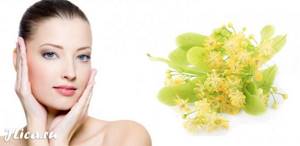
Anti-wrinkle mask
Result: caring for mature skin using natural products allows you to smooth out wrinkles and restore elasticity.
Ingredients:
- 20 ml linden decoction;
- banana;
- 30 drops of walnut oil.
Preparation and method of application: add warm broth and nourishing oil to banana mousse. Distribute the homogeneous composition onto cleansed surfaces and enjoy the effect for eighteen minutes.
Acne mask
Result: linden and thyme help cure purulent formations, reduce secretion, and stop the spread of infection.
Ingredients:
- linden coffee spoon;
- coffee spoon of thyme;
- a teaspoon of oatmeal.
Preparation and method of application: grind the flakes together with herbs into powder, apply the dry mass to the face moistened with water, along the massage lines. After eight minutes, rinse off; you can repeat the procedure every other day, until the skin is restored.
Video recipe: Tonic for blackheads and acne at home
Eye mask
Result: by preparing a homemade anti-aging eyelid remedy, you can easily get rid of puffiness and bags around the eyes.
Ingredients:
- 10 ml of decoction;
- 5 sprigs of parsley;
- 5 gr. cottage cheese.
Preparation and method of application: using a press, turn the green leaves into a pulp, mix with cottage cheese, dilute the dense mass with a healing decoction. After removing makeup, distribute the product while closing your eyes. After half an hour you can finish.
Mask for oily skin
Result: natural compounds can be used to cleanse ducts, reduce pores and restore structure.
Ingredients:
- 15 drops of linden infusion;
- Art. spoon of red clay;
- 2 teaspoons of kvass.
Preparation and method of application: combine Moroccan clay with a foamy drink and add a flower infusion. Spread the finished mixture onto the steamed surfaces using a spatula. After about twelve minutes, complete facial care in the usual way.
Mask for dry skin
Result: normalizes water-lipid balance, saturates with vitamins and minerals.
Ingredients:
- 15 ml linden decoction;
- yolk;
- persimmon.
Preparation and method of application: after peeling the fruit and seeds, grind it into a puree in a kitchen machine, add the yolk and medicinal liquid. Distribute over the entire surface of the face, the moisturizing procedure lasts thirty-five minutes.
Video recipe: Lotion based on honey and linden blossom for the care of dry skin
Mask for softening and cleansing the skin
Result: natural cosmetics provides rejuvenation, cleansing, restoration of dermal turgor.
Ingredients:
- 8 drops of linden infusion;
- 10 gr. pea puree;
- 10 ml cream.
Preparation and method of application: after cooking bean puree, add milk cream and infusion of flowers. Apply the prepared mixture using a spatula, leave for ten minutes, and wash with cool water.
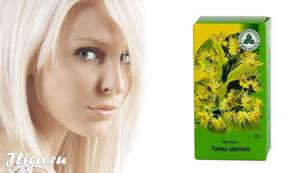
Skin elasticity mask
Result: make the skin firm and elastic, correct the oval line with homemade recipes.
Ingredients:
- 5 gr. linden color;
- 10 gr. kelp.
Preparation and method of application: grind the components in a coffee grinder, pour in mineral water for an hour. Then thoroughly steam the surface with a compress, apply a viscous mask along the lymph flow lines. Wash after forty minutes.
Linden and chamomile mask
Result: improves complexion, reduces dryness, whitens pigmentation, home remedy with linden and chamomile inflorescences.
Ingredients:
- a teaspoon of linden;
- coffee spoon of chamomile;
- Art. spoon of honey.
Preparation and method of application: grind dry herbs into powder, combine linden and chamomile flowers with honey, distribute in a circular motion. After resting for 20-25 minutes, finish by applying a care product.
Video: How to properly use linden for skin at home
Herbal medicine in cosmetology
Despite the wide selection of the latest cosmetics, herbal treatment - herbal medicine - in cosmetology still remains perhaps the most popular method of care. Indeed, with certain knowledge and skills, herbal medicine can become an effective, safe and, importantly, affordable means for home skin care. However, herbal decoctions and berry masks should be used wisely and without fanaticism!
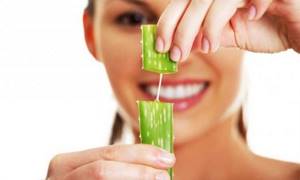
Herbal medicine in cosmetology 14996
Natural cosmetic bag
All medicinal plants are conventionally divided into two groups: general effects on the body, which are taken orally, and external (local effects). Plants with local action are classified into subgroups based on the nature of their effect on the skin: nourishing, anti-inflammatory, astringent, tonic, whitening, irritant.
Nourishing herbs are commonly prescribed to soothe dry skin and dry hair. Vegetables and fruits rich in carotene have nutritional properties: carrots, persimmons, apricots, pumpkin, tomatoes, sea buckthorn.
Anti-inflammatory plants that have a disinfecting effect are effective in caring for oily skin and/or oily hair. This group includes St. John's wort, chamomile, calendula, plantain, sage, coltsfoot, horsetail, and mint.
Tonic plants are useful for sagging skin with pronounced age-related changes. The main representatives of this group are aloe and ginseng.
Astringents or tanning plants are used for oily skin and oily hair. They also have an anti-inflammatory effect, but they do not disinfect the skin, but tan it. Active substances (tannins) bind skin proteins and thicken them. Galangal root and oak bark have these properties.
Fresh lemon juice, black currants, strawberries, and parsley leaves have a whitening They are used to whiten age spots and freckles.
Irritating plants (irritants) are used to increase blood circulation and stimulate hair growth, and prevent alopecia. These include calamus, hot pepper, garlic, onion (juice), which contain formic acid and essential oils that irritate the skin.
Some plants are used in decorative cosmetics, for example, for hair coloring. These are green walnut shells, rhubarb roots, coffee, onion scale decoction, lavsonia leaves (henna is made from them), indigo leaves (basma).
From A to Z: find your plant!
And now let’s get down to the most interesting part: let’s choose from the plants available in Ukraine what our skin specifically requires.
- Arnica: refreshes and tones the skin.
- Birch is rich in mineral salts, regulates water balance, protects the skin from dehydration, reduces sweating
- Oak (bark) tightens pores, reduces sweating
- St. John's wort is an antiseptic, accelerates wound healing, but can increase pigmentation and is contraindicated if there is a risk of developing a photosensitivity reaction.
- Calendula is an excellent anti-inflammatory and antiseptic agent\
- Horse chestnut improves blood circulation, eliminates spider veins
- Linden (flowers) provides anti-inflammatory, analgesic, sedative effect
- Raspberry (leaves) has an anti-inflammatory and tonic effect
- Mint soothes irritated skin, eliminates itching, softens the skin
- Sea buckthorn regenerates skin
- Oats – has an astringent effect, soothes irritated skin
- Plantain disinfects and heals wounds and scratches
- Rose provides an anti-inflammatory effect and is often used in aromatherapy
- Chamomile has an anti-inflammatory effect, tones, softens the skin, improves blood circulation
- Currant (leaves) whitens skin
- Horsetail Improves blood circulation
- Sage tightens pores, reduces acne symptoms
- Rosehip relieves inflammation, tones, regulates water balance
Different forms - different action
First of all, you need to know about the different forms of herbal medicines used in cosmetology: these are infusions, decoctions and tinctures. Infusions and decoctions of herbs are added to baths and also used for washing.
Preparation of decoctions and infusions 14640
Infusions can be cold or hot. To obtain a cold infusion, the fresh plant is crushed, ground and poured with cold boiled water for 6-8 hours, after which it is filtered. If a hot infusion is being prepared, then the crushed mixture is poured with boiling water and left for 15-20 minutes, then cooled for 30-45 minutes and filtered thoroughly.
Decoctions are prepared mainly from bark or roots. The crushed raw materials are poured with boiling water and boiled in a water bath for 20-30 minutes, after cooling, filtered.
Tinctures are prepared with alcohol. They have a longer shelf life than infusions prepared with water.
How to prepare oat decoction: example 14583
Use of plants: use according to the rules
Herbal remedies in cosmetology are used in the form of rubs, lotions, compresses and masks. Wiping is carried out with a cotton or gauze swab, pre-moistened in juice, infusion or decoction. You can wipe your skin with ice cubes, which are prepared from an infusion of medicinal plants.
For lotions , use gauze napkins soaked in juices, infusions and decoctions. They are applied to the skin.
When preparing compresses , a gauze cloth, previously soaked in plant extract, is covered with compress paper on top, then with a layer of cotton wool. When the skin warms up, the therapeutic effect of the compress intensifies. An example of a tonic and anti-inflammatory recipe: a dry mixture of black currant leaves, dandelion, plantain, chamomile flowers is placed in a linen bag, heated in a dry frying pan and applied to the skin. Heating the bag is repeated 2-3 times. At the same time, the skin warms up well, blood circulation improves, and essential oils of plants penetrate deeply into the pores.
Masks are prepared from the pulp of berries, seasonal vegetables, fruits, juices or dried herbs. You shouldn't keep them for a long time; they are rather used as a means of express care.
Strawberry face mask 14613
